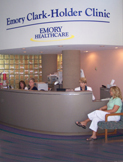
Sept. 29, 2008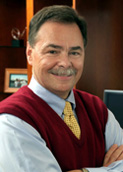 Fred Sanfilippo, MD, PhD |
Campaign should be "owned" by each of us
By now everyone should have heard about our comprehensive campaign, which officially launched last week. I hope you've also heard the exciting news that Maggi McKay has been selected after a nationwide search to serve as vice president for development for the Woodruff Health Sciences Center. In her new capacity, she and her team will be responsible for helping us raise $1.07 billion of Emory's total $1.6 billion campaign goal. Of course, the capital resources the campaign will raise are crucial to the success of all components of the WHSC. The math is simple: The more money we raise, the more progress we can make toward transforming health and healing … together. But the campaign is also about much more than money. It's about raising awareness of the lifesaving work being performed here—the medical and scientific innovations being pioneered, the next generation of the nation's best and brightest health professional students being prepared for service, and the high-quality, patient- and family-centered care being administered to people in need throughout Atlanta and the region. It's about engaging people in our success and building lasting and meaningful relationships with our constituents and our community. That's why our campaign isn't just the responsibility of Maggi McKay and the development staff. Rather, it's the responsibility of all of us to "own" the campaign and do all we can to ensure its success. After a nearly 15-year gap since our last campaign, it's very important to develop a culture in which each one of us instinctively uses every point of contact with our constituents—donors, volunteers, patients, and students—to help them understand the WHSC story and to make them feel good about supporting it. And why wouldn't they? "Transforming health and healing … together" is a truly compelling vision that everyone should be proud to support. When we get people excited about the great work we're doing here in the WSHC, they'll want to be part of that vision—and a successful campaign will result. Please join me in welcoming Maggi McKay to her new role within the WHSC and in pledging to do our part for the campaign by proudly telling the Emory health story every chance we get. Please share your thoughts and feedback at evphafeedback@emory.edu. |
|||
Campaign should be "owned" by each of us Clearing pathways for revenue growth Research funding tops $400 million Grant funds Parkinson's center research Emory Healthcare board enlarges membership Emory Healthcare inaugurates med tech school
|
||||
|
Another milestone has been attained to make way for planned future construction at WHSC. On September 23, the DeKalb County Board of Commissioners unanimously approved special land use permits to address the height of the new clinic and hospital on Clifton Road as well as expansion of the parking deck at the Clairmont campus. The Clairmont expansion is expected to begin early in 2009, followed later that spring by work on the new clinic, with excavation to build underground parking for clinic patients. (This will not affect current patient parking.) Construction of the new hospital is slated to begin in 2010. Plans call for both the clinic and 250-bed hospital to be completed in 2013, giving Emory the patient- and family-centered health care facilities that so many faculty, staff, and patients/families will have helped plan. (The DeKalb County permit did not address construction planned for the midtown campus, which is in Fulton County.) "Our dreams are beginning to be fulfilled," says Charles Andrews, senior associate VP for space planning and construction. But Andrews, who has overseen 12 facilities built on the health sciences campus, knows that construction also may cause temporary disruption in the daily lives of employees. The good news, he says, is that the Emory team has experience and skill in managing potential problems and is working diligently to minimize inconvenience for both employees and patients. Communication is essential. Regular ongoing updates will cover construction and consequent changes in movement patterns (cars, shuttle buses, pedestrians), both campus-wide and for employees working in individual buildings. Emory's construction web site already contains both big-picture information—the campus and housing master plans, for example—and a seven-day forecast of construction-related impact. The site also provides an option to sign up for "urgent updates" by email. Also essential are patience and flexibility, says Andrews. He suggests considering strategies like the following to help minimize effects of construction: • Check the construction web site frequently, and read construction-related email. • In response to construction-related changes in traffic flow, negotiate flexible working hours, if possible. • If construction noise becomes disruptive, take a laptop to another site for a few hours, if possible. "We are all in this together," says Andrews. "Keeping a sense of humor helps too. Our experience during what already has been the biggest building push in the institution's history illustrates how well we are going to come through the next five years to where we want to be." |
|||
Bio stats: Contact: |
Clearing pathways for revenue growth to expand patient services
One in a series of profiles of people in the Woodruff Health Sciences Center At Emory Healthcare, approximately 60% of current revenue comes through managed care contracts, whether commercial, Medicare, or Medicaid. The person in charge of administering and optimizing this highly critical function is Patrick Hammond, whose role was expanded last week when his title was changed to executive director of revenue management and analysis. In this new function, he is still charged with managing managed care, but now he also will analyze income from all payers, including managed care, with an eye for opportunities to build and support new streams of revenue. Hammond has a lot of experience with revenue streams. In fact, he played a role in the tidal wave of managed care from its earliest inception at Emory Healthcare. In 1991, with a biology degree from Emory and a new master's in health administration from Duke, he began work as an administrative resident at Emory Crawford Long Hospital. The following year, he was appointed to direct the hospital's growing managed care business and several years later was appointed to lead managed care for Emory Healthcare as a whole. At the time, managed care represented less than 1% of the overall business of Emory's hospitals and clinic. As managed care burgeoned, Hammond's responsibilities grew. "I feel as if I were called to do this work," he says. "Keeping our revenue and managed care relations strong enables us to grow our services and keep the door open for people who need Emory Healthcare." Emory Healthcare currently has more than 90 managed care agreements. Six contracts account for almost three-quarters of the system's overall managed care volume. Some of the remaining contracts serve small businesses that funnel only a handful of patients to Emory each year. Is negotiating and maintaining these contracts worth the effort? Hammond says yes. Without that contract, he says, those patients would be unable to come here for services that in some cases no one else in the region provides. Negotiating contracts forms a large part of Hammond's responsibilities. The biggest challenge, he says, is balancing income needs with reimbursement rates that the market considers appropriate. This is particularly tricky because Emory provides many high-end, life-saving, and often expensive services. Emory needs reimbursement levels that cover the cost to provide these services. Payers sometimes argue that they cannot afford to raise their rates when employers are struggling to pay. Hammond's team negotiates a middle ground that both can live with. Another part of his job involves working with staff members such as Dorothy Cook-Walter (director of medical staff services) who helps credential clinical staff and enroll them in billing systems per specifications of various payers. Credentialing of clinicians is a requirement for Joint Commission accreditation and for managed care contracts. Ninety-plus managed care plans translate into thousands of applications and renewals, and his office takes this work off the shoulders of Emory's clinicians. Hammond also works with Bernadette Cotton (manager, data reporting and payment variance) to ensure that the Emory Clinic receives all monies due from managed care contracts. Identifying and correcting underpayments from this source usually means an extra $3 to $4 million in collections per year for the clinic. Hammond's department assists the other components of Emory Healthcare in collecting underpayments as well. Finally, Hammond works with Human Resources to help ensure that Emory's own health care plans are providing good value to faculty and staff. "I grew up at Emory," says Hammond, "and I love working with a great team and coming to a job that I know is having an impact both on the institution and on people's lives each day." |
|||
|
Research funding tops $400 million Researchers in the health sciences attracted $387.5 million in fiscal year 07-08, more than 94% of the $411.2 million total received by the university this year. The total for health sciences represents an 8% increase over last year. Funding to the medical school grew by 10%, to Yerkes by 13%, and to the nursing school by 8%. The $53.8 million received in public health represented only a slight decrease from FY 06-07, a year in which public health enjoyed an impressive 45% increase over the preceding year. Read more. |
|||
|
Grant funds Parkinson's center research
A $6.4 million grant from the National Institute of Environmental Health Sciences will fund research at Emory's newly created Parkinson's Disease Collaborative Environmental Research Center, led by public health's Gary Miller. Miller's team, which includes toxicologists, neurologists, biochemists, pharmacologists, statisticians and systems biologists, will probe how environmental and genetic factors interact to alter function in dopamine neurons. The team will also attempt to develop new biomarkers in the blood to help identify people at risk for the disease. Read more. |
|||
|
Emory Healthcare board enlarges membership The Emory Healthcare Board of Directors added two new membership seats this month, bringing the total to 22 and strengthening representation from faculty and community physicians at Emory Crawford Long Hospital (ECLH) at a time when Emory is growing the midtown campus in both size and programs. New physician directors include Emory faculty member Angel Leon (cardiology) and ECLH community physician Norman Elliott (gastroenterology). In addition, radiology chair Carolyn Meltzer replaces neurology chair Allan Levey, whose term expired on August 31. Always a vital part of ECLH and Emory, community physicians now total 530 at the midtown hospital, working side by side with some 930 Emory faculty physicians. Community physicians are invaluable to the hospital's clinical success, admitting roughly half of all patients to the hospital and referring still others. Emory plans to enhance their role in teaching and research missions as well, to further integrate academic and community perspectives. Examples include increasing opportunities for interaction at the bedside between community physicians and medical trainees and for collaboration in clinical trials. New board member Angel Leon holds the Linton and June Bishop Chair in Medicine (named for a community physician who earlier served on the EHC board) and is chief of cardiology at ECLH. In 1992, he inaugurated the hospital's cardiac electrophysiology service, growing it into one of the largest academic arrhythmia services in the country and establishing outreach electrophysiology services and cardiac device follow-up clinics in towns throughout Georgia. (See bio.) New community-based board member Norman Elliott is a member of Atlanta Gastroenterology Associates and holds clinical assistant professorships in medicine at Morehouse and Emory (where he completed both his internship and residency after graduating from Yale School of Medicine). He has been a team physician for the Atlanta Braves since 1992. Elliott served as a pilot for the U.S. Air Force for five years and this year retired as brigadier general in the Air National Guard. (See bio.) In addition to chairing radiology, new board member Carolyn Meltzer is William P. Timmie Professor in radiology. She holds appointments in neurology and in psychiatry and behavioral sciences and is associate dean for research in the medical school. She is also strategic director of the Center for Systems Imaging, which supports imaging facilities and imaging research throughout campus. (See bio.) Click here for a full list of EHC Board members. |
|||
|
Emory Healthcare inaugurates school of medical technology The Emory Healthcare School of Medical Technology convened its inaugural class of seven students on September 4. The school is a full-time, hospital-based program for applicants with a bachelor's degree (preferably in science) and an interest in laboratory science. Students will receive a certificate in medical technology after completion of the 12-month program. One of only four such programs in Georgia, the school was created partly in response to a growing labor shortage for medical technologists. The program's instructors include medical technologists, pathologists, and residents in pathology and laboratory medicine. Program administrators include John Roback and Marilea Grider (medical and program directors, respectively) and Stacy Steward (laboratory education coordinator). Read more. |
|||
|
Appointments • Robert Swerlick was recently named chair of dermatology after serving as interim chair since April 2007. During his tenure at Emory, Swerlick has held many leadership positions, including service as director of the Cutaneous Immunofluorescence Laboratories, director of the Molecular Analysis Core in the Emory Skin Diseases Research Center, chief of dermatology at the Atlanta VA Medical Center, director of the Dermatology Residency Program, and vice-chair of the Department of Dermatology. Read more. • June Connor has been named associate chief operating officer and associate chief nursing officer for the new Emory University Orthopaedics & Spine Hospital. Connor has served Emory for more than 30 years in numerous capacities, including staff nurse, director of nursing, assistant administrator for cardiology services, and instructor in the nursing school. Read more. • Georgia Bio, a nonprofit advocacy group promoting the life sciences industry in Georgia, recently added nine members to its board of directors, including two from Emory: EVPHA Fred Sanfilippo and David Wynes, VP for research administration. Charles H. "Pete" McTier, WHSC trustee and former president of the Robert W. Woodruff Foundation, was also named to the board as well as to Georgia Bio's executive committee. Read more. |
|||
|
• NCI completes site visit to Winship On September 11, representatives from the National Cancer Institute completed a site visit to Emory Winship Cancer Institute as part of Winship's application for an NCI cancer center support grant. Approval and funding of this application would result in Emory's achieving its longtime goal of becoming an NCI-designated cancer center. The site visitors conducted a thorough and rigorous review of Winship's scientific programs, shared core facilities, and clinical trials. The NCI now will compile scores from the grant submission and site visit. Winship will learn these scores sometime in December and will receive official notification of the results by March 2009. Stay tuned. |
|||
• Brainstorming for innovations Earlier this month, more than 125 leaders throughout health sciences gathered at a daylong retreat to share ideas and kick off the programming phase for new inpatient and research facilities on Clifton Road and in midtown. In this phase, project objectives are finalized, and building and user requirements are set. The effort involves gathering information from a diverse range of stakeholders—from clinicians, researchers, educators, administrators, and staff to patients and their families. Employees can submit ideas on innovations for the new facility plan at emoryfacilityideas@emoryhealthcare.org. Read more. |
||||
|
• Public health students build tradition as volunteers On August 28, more than 400 public health students rolled up their sleeves to help those in need, as part of the Rollins School of Public Health's second annual "Rollinsteer" day. The service-learning program is part of new student orientation and includes more than a dozen services sites, including Atlanta Union Mission, Metro Atlanta Task Force for the Homeless, West Atlanta Watershed Alliance, and Senior Citizens Services. View slide show. |
|||
|
• Save the date Thomas Lawley, dean of the medical school, will present the annual state-of-the-school address on October 14 at 5:00 p.m. in Cox Hall Ballroom. Reception to follow. |
|||
|
• Emory Healthcare outreach The group practice formerly called Clark-Holder Clinic recently finalized its agreement to join Emory Specialty Associates, a subsidiary of Emory Healthcare. The practice's new name, Emory Clark-Holder Clinic, took effect on July 1. Emory Clark-Holder is the largest multi-specialty group practice in west Georgia and employs more than 30 clinicians and 170 staff members, with key facility locations including LaGrange and West Point. Read more. Emory Healthcare also is partnering with Athens Regional Health Services (ARHS) to offer advanced cardiac and thoracic surgery in northeast Georgia. ARHS serves a 17-county area and includes the 315-bed Athens Regional Medical Center. Procedures that will become standard at this facility include video-assisted thoracotomy and mitral valve repair. Read more. |
|||
 |
• Read all about it The fall issue of Emory Medicine magazine, now online, includes features on the effects of alcohol on lung function, tribulations of a recent failed HIV vaccine trial, student advocacy for Grady Hospital, and cardiologist Nanette Wenger, who draws on wisdom from half a century of medical practice.
|
|||


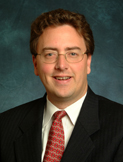 Patrick Hammond
Patrick Hammond
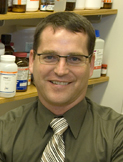 Gary Miller
Gary Miller Angel Leon
Angel Leon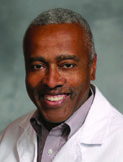 Norman Elliott
Norman Elliott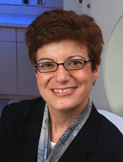 Carolyn Meltzer
Carolyn Meltzer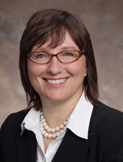 Marilea Grider
Marilea Grider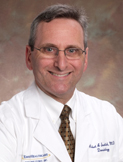 Robert Swerlick
Robert Swerlick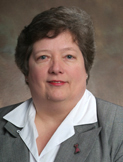 June Connor
June Connor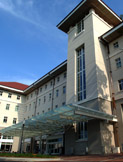
 Student Rollinsteer
Student Rollinsteer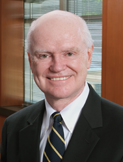 Thomas Lawley
Thomas Lawley